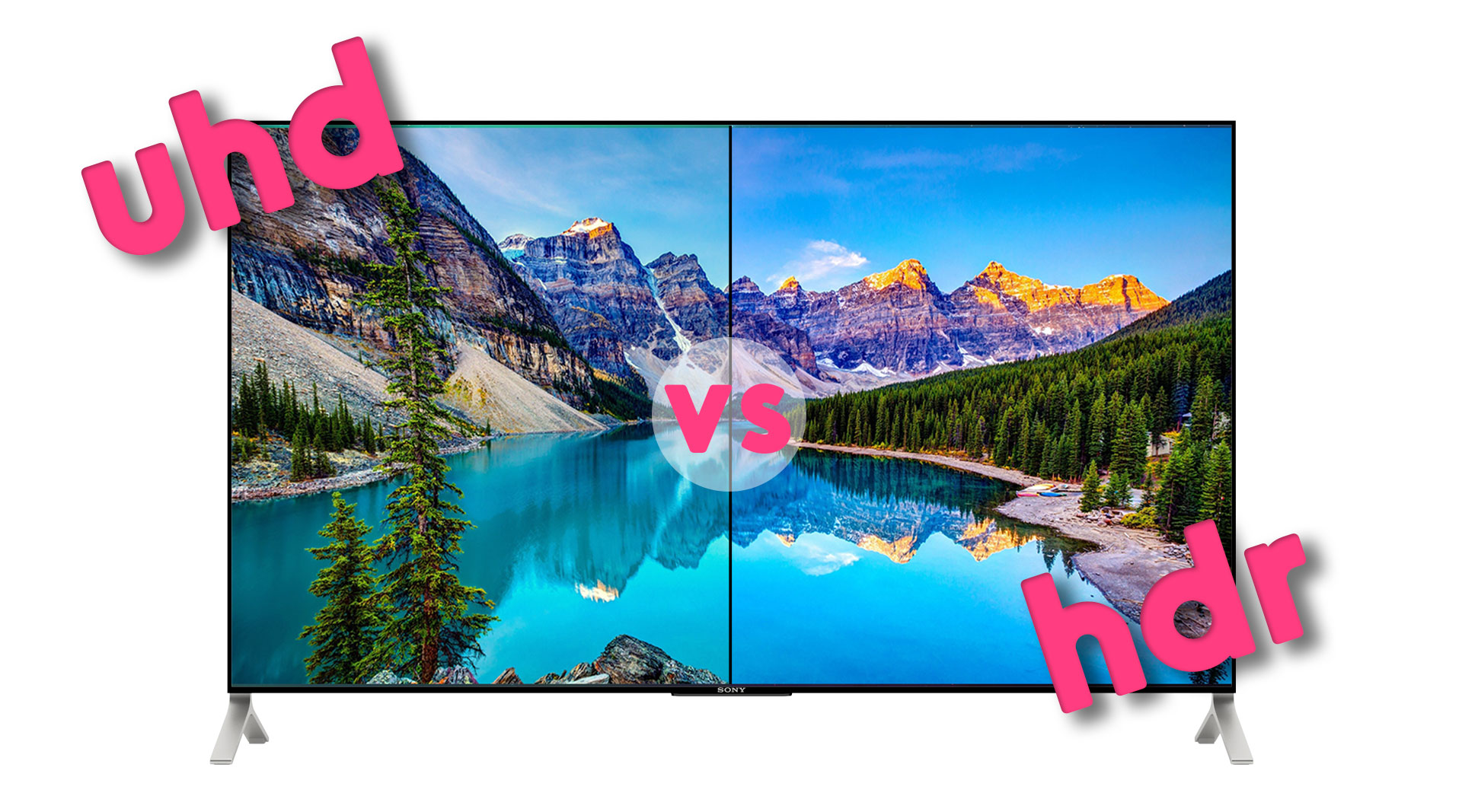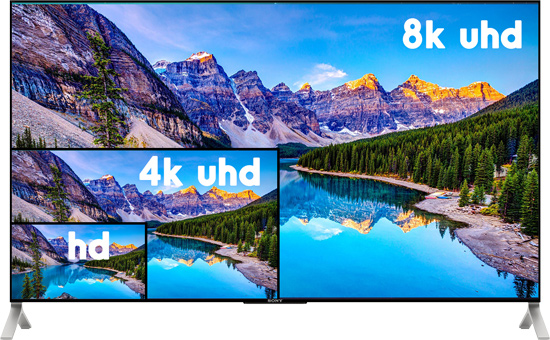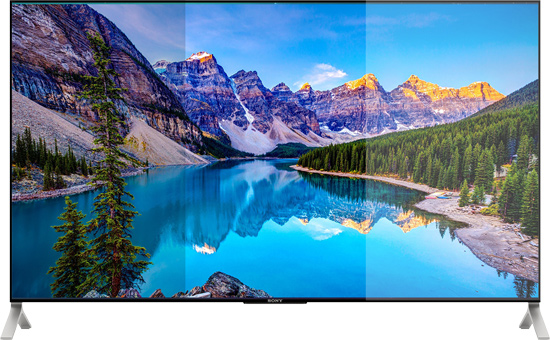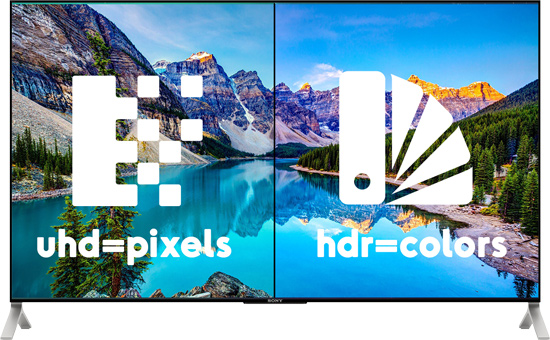
UHD vs HDR
in 4k TVs
April 4, 2025 · 5 minutes read
UHD refers to resolution, with four times the pixel count of Full HD.
HDR enhances color and contrast, making images appear more lifelike.
4K UHD and HDR can coexist in TVs for a superior viewing experience.
The choice between UHD and HDR depends on personal preference and content type.
Always understand the specifications before buying a new TV to ensure you get the best fit for your needs.
As technology advances, so does the jargon, especially when you're in the market for a new TV. You've probably encountered terms like UHD and HDR, especially with 4K TVs. This article delves into these buzzwords, shedding light on the difference between UHD vs HDR, and helping you make an informed decision for your next TV purchase. If you want the best televisions viewing experience, understanding these terms is essential.
UHD stands for Ultra High Definition. It refers to the resolution of the display. A UHD TV has a resolution four times greater than that of Full HD (1080p). This means a higher pixel count, leading to a clearer and more detailed viewing experience. In simple terms, UHD TVs have more pixels per square inch than HD TVs, making images look sharper.

Often, the terms 4K and UHD are used interchangeably. While they are closely related, there is a slight difference. 4K refers to a resolution of 4096 x 2160 pixels, which is mostly used in the cinema. On the other hand, UHD TVs have a resolution of 3840 x 2160 pixels, which is often referred to as 4K for simplicity.
HDR stands for High Dynamic Range. Unlike UHD which focuses on resolution, HDR deals with the display's contrast ratio and color accuracy. HDR improves the whites and darks on your screen, making images more lifelike. When you watch HDR content on an HDR-compatible TV, you'll notice richer colors and more details in the bright and dark areas of the screen.

4K HDR combines 4K resolution (3840 x 2160 pixels) with High Dynamic Range (HDR) technology. This fusion offers exceptional resolution and color accuracy, making images appear sharper, more detailed, and lifelike. 4K HDR enhances the color and contrast of each pixel, providing a more immersive viewing experience.
The main difference between UHD and HDR lies in what they improve. UHD boosts resolution while HDR enhances color and contrast. UHD is all about pixel count, while HDR makes each of those pixels display a wider range of colors and brightness levels. Thus, UHD gives you more pixels, and HDR makes those pixels look better.
| UHD | HDR | |
|---|---|---|
| Definition | Stands for Ultra High Definition. Focuses on resolution. | Stands for High Dynamic Range. Focuses on enhancing contrast ratio and color accuracy. |
| Pixel Dimensions | Often referred to as 4K for TVs with a resolution of 3840 x 2160 pixels. | Does not define pixel dimensions; it enhances the quality of each pixel. |
| Main Focus | Enhances pixel count for sharper images. Has four times the pixel count of Full HD. | Enhances color and contrast of each pixel. Allows for richer colors and more details in bright and dark areas. |
| Visual Impact | Offers a clearer and more detailed viewing experience due to higher pixel count. | Provides significant visual improvement in color and contrast, making scenes more lifelike. |
| Content Suitability | Ideal for content where clarity and sharpness are priorities, e.g., gaming. | Perfect for movies or content where color accuracy and dynamic contrasts are essential. |
| Compatibility with the Other | A UHD TV can have HDR, but it's not a given. | HDR can be featured in both HD and UHD TVs, but the impact is more pronounced in UHD due to higher resolution. |
Pixel count directly relates to the resolution. A UHD TV has four times the number of pixels as a 1080p Full HD TV. This increase in pixel count makes the image sharper, offering a more detailed viewing experience. On the other hand, HDR doesn't change the number of pixels but improves the quality of each pixel.

The visual impact of HDR is impressive. It significantly improves the contrast, allowing for deeper blacks and brighter whites. Scenes in movies and shows feel more realistic, and games appear more immersive. In essence, HDR televisions redefine the boundaries of color and brightness, giving viewers an unparalleled experience.
It's not about one being better than the other. 4K UHD enhances resolution, and HDR elevates color and contrast. While a 4K UHD TV can offer a brilliant viewing experience, the addition of HDR takes it to a whole new level. However, the choice depends on personal preferences and the content you're watching.
Yes, many modern TVs come equipped with both 4K UHD and HDR. These TVs offer the best of both worlds, combining sharp resolution with dynamic color and contrast. The synergy of 4K UHD and HDR provides an unparalleled viewing experience.
The overlapping use of these terms is mainly due to marketing tactics. Brands often use terms that sound appealing, even if they are not entirely accurate. It's essential to educate yourself and understand the differences to make an informed purchase.
When choosing a new TV, consider what you prioritize more: resolution or color accuracy. If you mostly watch movies, an HDR TV can bring scenes to life. However, if you're into gaming or enjoy crisp visuals, a 4K UHD TV might be more suitable. For the best experience, look for a TV that offers both.
Modern TVs now support advanced HDR formats that dynamically adjust to content and lighting conditions. HDR10+ adds dynamic metadata to optimize each scene. Dolby Vision IQ uses ambient light sensors to adjust picture quality in real-time. HLG (Hybrid Log-Gamma) is optimized for broadcast content. These formats deliver superior contrast and color accuracy compared to standard HDR10.
Next-gen consoles like PlayStation 5 and Xbox Series X fully support 4K HDR gaming. For optimal performance, look for TVs with HDMI 2.1 ports that support 120Hz refresh rates and Variable Refresh Rate (VRR). Many games now support Dolby Vision gaming, which provides better highlights and shadows than standard HDR10.
8K UHD (7680 × 4320 pixels) offers four times the resolution of 4K, but content remains limited. Most 8K TVs use advanced upscaling to enhance lower-resolution content. While 8K provides incredible detail, the benefits are most noticeable on very large screens (75"+) viewed from close distances. Currently, 8K adoption is slower than 4K due to bandwidth requirements and lack of native content.
Different HDR formats have varying HDMI requirements. Standard HDR10 works with HDMI 2.0, while HDR10+ and Dolby Vision need HDMI 2.0a or later. For 4K/120Hz HDR gaming, HDMI 2.1 is essential. Ensure your cables are certified Premium High Speed (18Gbps) or Ultra High Speed (48Gbps) for full HDR support.
HDR benefits from higher bit depth (10-bit vs 8-bit panels) which reduces banding in gradients. Color gamut coverage (DCI-P3, Rec.2020) determines how many colors a TV can display. Premium HDR TVs cover 90%+ of DCI-P3, while top models approach Rec.2020. Wider gamuts produce more vibrant, realistic colors.
Consider upgrading to HDR if you watch lots of movies, nature documentaries, or play HDR-supported games. For casual TV viewing, the difference may not justify the cost. Budget HDR TVs ($500-$1000) offer decent performance, while premium models ($1500+) deliver superior brightness and color accuracy. Mid-range options ($1000-$1500) provide the best value for most viewers.
Modern TVs use AI processors to upscale standard content to near-HDR quality. These systems analyze each frame to enhance contrast, reduce noise, and improve color. While not true HDR, the results can be impressive. Native HDR content still looks best, but AI upscaling makes non-HDR content more enjoyable on premium TVs.
Most major streaming platforms now support HDR: Netflix (Premium plan), Disney+, Amazon Prime Video, and Apple TV+ all offer HDR content. YouTube supports HDR10 and HLG. For optimal streaming quality, ensure your internet connection delivers at least 25Mbps for 4K HDR content. Some services require specific devices for HDR playback.
You just came across the terms FTTN and wonder what it is? Search no more, we have you covered with all the informations you need to know about FTTN...
The movie streaming data calculator lets you know exactly how much data of streaming is needed to watch your next movie in 480p, 720p 1080p, 1440p, 4K and 8K...
Complete list of television channels free of charge in Quebec in high definition with a digital antenna...
4.9/5 out of 171 reviews